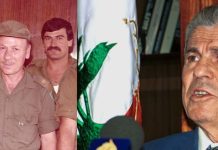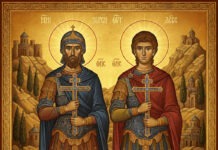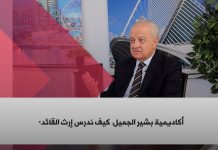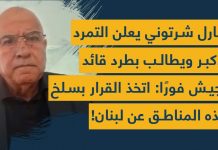Putin and His One-Man War
Amir Taheri/Asharq Al-Awsat/March, 11/2022
بوتين وحرب الرجل الواحد
أمير طاهري/الشرق الأوسط/11 آذار/2022
عندما شن الرئيس الروسي فلاديمير بوتين اجتياحه لأوكرانيا منذ أكثر عن أسبوعين، بدا وكأنه رجل يعرف ما يفعله. وخلال اجتماعه المتلفز مع المجلس الأعلى للأمن الوطني، أعطى انطباعاً بأن لديه خطة حرب دقيقة تسعى لأهداف واضحة. ورغم ذلك، نجد الآن من المتعذر استبعاد احتمال أن يكون هذا الانطباع خاطئاً. بمعنى آخر: ماذا لو كان بوتين لا يعرف ما يفعله أو، الأسوأ عن ذلك، لا يعرف ماذا يريد؟ بداية، رفض بوتين استخدام لفظ «حرب» لإحداث انطباع بأن «عمليته الخاصة» القصيرة سعت إلى تحقيق الهدف المحدود المتمثل في تعزيز السيطرة على الجيبين المنفصلين دونيتسك ولوغانسك بوصفهما «جمهوريتين مستقلتين». ومع ذلك، وعلى نحو شبه فوري تقريباً، اتضح أن بوتين لم يقصد أن يقتصر طموحه على هذا المدى. جدير بالذكر هنا، أن بوتين كان يسيطر بالفعل على الجيبين لمدة ثماني سنوات، ومر الجزء الأكبر من هذه السنوات بهدوء إلى حد ما بفضل ما يسمى اتفاقات مينسك مع السلطات في كييف. ولم تكن هناك حاجة إلى حشد ما يقرب من 200 ألف جندي، بعضهم في بيلاروسيا، لتحقيق ما أصبح بالفعل وضعاً قائماً.
وتمثلت الخطوة التالية في إعلان أن بوتين لن يكون راضياً عن أجزاء الدونباس التي كان يسيطر عليها بالفعل، وأنه سيسعى للسيطرة على الـ60 في المائة التي ظلت تحت السيطرة الأوكرانية. وجاءت حقيقة أنه شنّ خلال الأسبوع الثاني هجمات ضد خاركوف في الشمال وماريوبول في الجنوب، لتثير الانطباع بأنه يرغب في اقتطاع دونباس بالكامل عبر خط الشمال – الجنوب. ومع ذلك، جرى التخلي عن هذا الأمر أيضاً عندما بدأت قوات بوتين في مهاجمة الغرب، بما في ذلك اندفاعه نحو كييف. في كل مرة اتصل الرئيس الفرنسي إيمانويل ماكرون ببوتين، سمع أمراً مختلفاً عن أهداف الرئيس الروسي العسكرية. وبحلول نهاية الأسبوع الثاني، أعلن بوتين أن هدفه تفكيك أوكرانيا كدولة قومية، مذكراً الجميع بهتلر وضمه النمسا من خلال عملية «أنشلوس».
إلا أن هذا الهدف بدا هو الآخر خيالياً. عام 1938، كانت النمسا الجزء الأخير من إمبراطورية عظيمة كانت قائمة ذات يوم من دون هوية وطنية مميزة. حتى هوغو فون هوفمانستال وستيفن تسفايغ اعتبرا النمسا جزءاً من العالم الألماني. في ذلك الوقت، كان جزء كبير من النمساويين النشطين سياسياً متعاطفين مع فكرة الاتحاد مع الرايخ. في الواقع، كان أدولف هتلر في الأصل نمساوياً. ومع ذلك، نجد في أوكرانيا اليوم، ثمة إحساس قوي، بغض النظر عما كان مضللاً، بالأمة يربط معظم الأوكرانيين، إن لم يكن جميعهم. ولا تكاد توجد أي دائرة انتخابية موالية لروسيا، حتى داخل الأجزاء المحتلة من دونباس، حيث فشل الانفصاليون المسلحون في إنشاء إدارات مدنية فاعلة وظلوا معتمدين كلياً على القوة الروسية. عندما بدأ الاجتياح، اعتقد بعض المحللين العسكريين الغربيين أن ما يسمى «عقيدة جيراسيموف» سيشكل المبدأ الموجه. وسُميت هذه العقيدة على اسم الجنرال فاليري جيراسيموف، رئيس الأركان الروسي، ومن المفترض أنها مستوحاة من الأساليب المستخدمة من قِبل الجنرالين الأميركيين ديفيد بتريوس وجيمس ماتيس في العراق، والتي جرى تصنيفها في وقت لاحق باعتبارها «حرباً مختلطة» من قِبل مخططي «الناتو». وتدور الفكرة الأساسية هنا حول استخدام القوة الصلبة في خدمة القوات المختلطة المكونة من حلفاء محليين، ووحدات من دون علامات رسمية مميزة، وحتى ملابس أمنية رسمية خاصة، وجميعها مدعومة برشى واسعة النطاق يجري تقديمها لأعداء حقيقيين أو محتملين، واستمالة الناس من خلال الجاذبية الثقافية والاقتصادية.
ومع ذلك، أظهر الأسبوعان الماضيان أن حرب بوتين لم يجر التخطيط لها وفقاً لـ«عقيدة جيراسيموف»، إذا كان مثل هذا الشيء موجوداً من الأساس. في الواقع، أعطى سلوك جيراسيموف المفاجئ خلال جلسة «الأمن» المتلفزة مع بوتين الانطباع بأنه ليس لديه أدنى فكرة عما خطط له «الرئيس الكبير».
في الواقع، من الصعب معرفة ما دار في ذهن بوتين، لكن الأسبوعين الماضيين كشفا عن أنه خطط لحربه تبعاً لقواعد الاستخبارات السوفياتية (كيه جي بي)، وليس استراتيجية عسكرية تقليدية. واعتمدت الاستراتيجية على الاستخدام المكثف والعشوائي للقوة، وفي الوقت الذي يشعر جيراسيموف والجيش المحترف بالقلق حيال الخسائر في صفوف رجالهم، ركز بوتين على إحداث أكبر قدر ممكن من الخراب. وتقدر الأرقام الرسمية الروسية الخسائر الروسية، خلال الأسبوع الأول من الحرب، بأكثر من 100 قتيل في اليوم. ولدى مقارنة هذه التقديرات بأفغانستان، حيث كانت الخسائر البشرية الروسية ستة قتلى في اليوم، لا يملك المرء سوى التساؤل عن الخطأ الذي حدث. في أوكرانيا، بلغت الخسائر الروسية حتى الآن ضعف ما كانت عليه في حرب عام 2008 ضد جورجيا، في الوقت الذي جرى فيه ضم شبه جزيرة القرم عام 2014 من دون خسائر تذكر.
داخل أوكرانيا، لا يسعى بوتين لكسب القلوب والعقول، الهدف الذي يعتبره ماتيس وربما جيراسيموف مهماً لتحقيق النصر.
على ما يبدو، يشكل إيفان المروع المثل الملهم لبوتين، فهو يريد ترويع الناس وإجبارهم على الخضوع المرير، كما فعلت قواته في مناطق داخل سوريا، حيث يتشبث هو وحلفاؤه بوهم القوة. ما يزيد الأمور تعقيداً، بدأ بوتين الحديث عن إعادة توحيد الكنائس الأرثوذكسية في كل من موسكو وكييف – ما يعد نمطاً من الجهاد على غرار نهج «كيه جي بي». في الحرب الكلاسيكية، تجري صياغة الهدف المباشر بثلاث كلمات: الانتصار والتطهير والسيطرة. ومع ذلك، فإن أسلوب بوتين المتفرد في الحرب يقيس النجاح من خلال حجم الحطام المتكون وأكوام القتلى المدنيين التي تخلفها وراءها.
وتعتبر غروزني في الشيشان وحمص وحلب في سوريا مجرد مثالين من كثير في هذا السياق. داخل سوريا، لم تغز قوات بوتين أي مكان وتسيطر عليه كاملاً، ولم تطهر المناطق التي توجد فيها، الأمر الذي تكشفه الهجمات الحضرية الأسبوعية داخل دمشق نفسها. علاوة على ذلك، لا تسيطر هذه القوات بشكل فاعل على مساحات واسعة من الأراضي. حتى القواعد الجوية البحرية التي أمّنها بوتين على الساحل السوري للبحر الأبيض المتوسط لا تزال عرضة للخطر. ولا يمكن لطرف ما أن يفوز في حرب إلا إذا أقر الطرف المقابل بهزيمته على الأقل، وهذا الخيار الأفضل من بين خيارات جميعها سيئ. وربما هذا السبب وراء أنه منذ عام 1945، لم يفلح أي جانب في الفوز حقاً في حرب ما على نحو حاسم ونهائي.
وتتمثل واحدة من المقولات الشهيرة بين المعنيين بالعلوم العسكرية في أن الحرب مسألة خطيرة للغاية بحيث لا يمكن تركها للجنرالات. مع بوتين، نرى أن الأسوأ عن ذلك ترك الأمر لعملاء «كيه جي بي». ربما يتمكن بوتين من الاستمرار في خلق أكوام الحطام لفترة طويلة؛ لأنه يحتكر القوة الجوية، وقد تدخل قواته ذات يوم كييف، أو ما تبقى منها، وتنصب فيكتور يانوكوفيتش، النسخة الأوكرانية لبشار الأسد، داخل حطام القصر الرئاسي. إلا أن ما لا يستطيع بوتين فعله إعادة بناء أوكرانيا كما يشاء. منذ أكثر عن 2000 عام، نقل المؤرخ تاسيتس عن زعيم المقاومة السلتية الذي يحارب الغزاة الرومان قوله «إنهم يصنعون الصحراء ويطلقون عليها السلام!».
Putin and His One-Man War
Amir Taheri/Asharq Al-Awsat/March, 11/2022
When he launched his invasion of Ukraine over two weeks ago, Russian President Vladimir Putin appeared like a man who knew what he was doing. In his televised session with the High Council of National Security, he gave the impression that he had a precise war plan with clear objectives.
Now, however, the possibility of that impression having been wrong cannot be dismissed. In other words: What if the Great Vladimir doesn’t know what he is doing or, worse still, doesn’t know what he wants?
To start with he refused to use the word “war” to create the impression that his brief “special operation” pursued the limited objective of consolidating the two breakaway enclaves of Donetsk and Luhansk as “independent republics”. Almost immediately, however, it became clear that he did not mean to limit himself to that ambition. He had been in control of the two enclaves for eight years most of which had passed fairly calmly thanks to the so-called Minsk Accords with the authorities in Kyiv. There was no need to assemble almost 200,000 troops, some of them in Belarus, to achieve what had already become a status quo.
The next step was to declare that he would not be satisfied with the chunks of the Donbas he already had and would seek control of the 60 percent that remained under Ukrainian control.
The fact that in the second week he launched attacks on Kharkiv in the north and Mariupol in the south gave the impression that he wished to carve out the whole of Donbas across a north-south line. However, that pirouette was also abandoned as Putin’s troops started attacking west, including a two-pronged dash for Kyiv. Each time, the French President Emmanuel Macron phoned Putin he heard something different about Vladimir’s war aims. By the end of the second week, Putin said his aim was to dismantle Ukraine as a nation-state, reminding everyone of Hitler and his Anschluss of Austria.
But that aim, too, appeared fanciful. In 1938, Austria had been the last chunk of a once-great empire with no distinct national identity. Even Hugo von Hofmannsthal and Steffen Zweig regarded Austria as part of the German world. At the time a good part of the politically active Austrians were sympathetic to union with the Reich; after all little Adolf himself was an Austrian.
In today’s Ukraine, however, misguided or not, a strong sense of nationhood binds most, if not all, Ukrainians. There is hardly any pro-Russian constituency, even in the occupied parts of Donbas where the armed secessionists have failed to create effective civilian administrations and remain totally dependent on Russian power.When the invasion began some Western military analysts believed that the so-called Gerasimov Doctrine would be the guideline. Named after General Valery Gerasimov, the Russian Chief of Staff, this doctrine is supposed to have been inspired by the methods used by US generals David Petraeus and James Mattis in Iraq and later codified as “hybrid warfare” by NATO planners. The key idea here is to use hard power in the service of hybrid forces consisting of local allies, units without official markings, and even private security outfits, all supported by large-scale bribing of actual or potential foes and the wooing of the people through cultural and economic attractiveness.
The past two weeks, however, have shown that Putin’s war has not been planned according to the Gerasimov Doctrine, if such a thing exists. In fact, Gerasimov’s surprised demeanor during the televised “security” session with Putin gave the impression that he had no idea what the “Big Boss” had planned.
It is hard to know what went on in Putin’s mind. But the past two weeks have shown that he has planned his war according to KGB rules rather than classical military strategy. He has relied on massive and indiscriminate use of force, and where Gerasimov and the professional military are concerned about losses among their men, he has been focused on wreaking as much havoc as he can.
Russian official figures for their losses, in the first week of the war, are given as over 100 a day which, compared with Afghanistan where Russian losses were six a day, makes one wonder what has gone wrong. In Ukraine Russian losses so far are twice higher than in the 2008 war against Georgia while in 2014 Crimea was annexed without significant losses. In Ukraine, Putin isn’t after the hearts-and-minds gymnastics that Mattis and possibly Gerasimov regarded as important for achieving victory. His model is Ivan the Awe-Inspiring (Grozny). He wants to terrorize people into abject submission as his forces did in parts of Syria where he and his allies hang on to an illusion of power.
To complicate matters further, Putin has started talking of reuniting the Orthodox churches of Moscow and Kyiv- a kind of jihad KGB-style.
In a classical war, the immediate aim is formulated with three words: conquer, cleanse, control. Putin’s idiosyncratic style of war, however, measures success by the size of debris created and the piles of civilian dead left behind.
Grozny in Chechnya, Homs, and Aleppo in Syria are just a few examples. In Syria Putin’s forces didn’t conquer anywhere, nor did they cleanse the areas where they are present, as testified by almost weekly urban attacks in Damascus itself. Nor are they in effective control of significant chunks of territory. Even the aero-naval bases that Putin has secured on the Syrian coast of the Mediterranean remain vulnerable.
No war is won by one side unless the opposite side admits defeat at least as the best of all bad options. This is, perhaps, why since 1945, no one has really won a war on a once-and-for-all basis.
One famous adage among military scholars is that war is too serious a matter to be left to generals. With Putin, we see that it is even worse to leave it to KGB operatives.
Putin may be able to continue producing his piles of fuming debris for a long time because he has a monopoly of airpower. His troops may one day even enter Kyiv, or what is left of it, and install Victor Yanukovych, the Ukrainian version of Bashar al-Assad, in the carcass of the presidential palace.
But what Putin cannot do is to rebuild Ukraine as he pleases. Over 2000 years ago historian Tacitus quoted the Celtic resistance leader fighting Roman invaders as saying: They make a desert and call it peace!





















